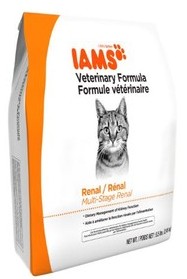Note:  Hurricane Irene has me thinking about disaster preparedness so I’m reposting this.  It a good reminder that we should all be prepared for an emergency, so I challenge you to start your emergency preparedness kit this weekend for your whole family—pets included!  Our thoughts are with those on the East Coast and we’re hoping for the best.
The anniversaries of 9/11 and Hurricane Katrina remind me how important it is that we plan to care for our whole family for an extended period of time in the event of a natural or man-made disaster. Â Turns out September is National Preparedness Month, so this is a great time to start getting prepared. Â This post has been a long time coming and was researched consulting the AVMA, FEMA, ASPCA, HSUS, CDC, Petfinder, & more. Â I hope you find it useful! Â (I ask that if you re-post it, that you give credit to & link to PetProject.)
It’s not that I’m all gloom and doom. It’s just that in the event of a disaster, I don’t want to be forced to rely on other agencies, if I can help it, and I know my pets will be safest under our care, so I’m working to be as prepared as possible. I live in earthquake country and we have a kit to take care of everyone in our family—human, feline, and canine. Getting prepared has been an ongoing process so I can spread out the cost and spread out the time & energy spent on the project.
Make sure your whole family is taken care of and do not leave your pets to fend for themselves. Keep them with you. If you evacuate and think you’ll only be away from your home a short time, take your animals with you! You don’t know when or if you’ll be able to return to your home.
I’ve divided the list into categories and put a ♥ by the items to start with first. Don’t get overwhelmed. Begin with the ♥ items and once you have those, set a goal—maybe 1-2 items every other week? And begin by gathering at least 3 days worth of supplies and work up to 1-2 weeks. Defray the costs by checking thrift stores and looking for sales—buy an extra bag of cat litter when it’s on sale, etc. Some of the items listed will double for a human preparedness kit.
Tasks:
- ♥Microchip every animal & keep the registered contact information up-to-date
- ♥Make sure your pets have collars and up-to-date ID tags, consider adding an out-of-state contact phone number too (it’s recommended families have an out-of-state contact (relative or friend) because when phone lines are flooded with calls, it’s sometimes easier to reach someone out of the area.)
- ♥Talk to your vet about obtaining medication for your emergency kit
- ♥Construct a First Aid Kit (I’ve compiled a comprehensive list for a well stocked kit)
- Place “Pets Inside†stickers at each entrance to your home listing what types of animals you have & how many—here’s where you can get a free decal
- Make up “Lost†posters for your pets (in case they get lost) with space for up-to-date contact information if you’ve evacuated, here’s a form that will create a poster for you
- Develop a plan that doesn’t rely solely on public emergency shelters (most won’t allow animals)–we plan to keep our pets with us, so we have a tent, etc.
- Petfinder has a number of useful links for finding pet friendly motels/hotels—identify nearby options & options outside your local area
- Coordinate with a nearby friend or trustworthy neighbor to take care of your pets in case something happens while you’re away from your home (make sure your friend or neighbor is familiar with your pets & that your pets are comfortable with them, give them a key & care information for your pets, be clear about your arrangement—will they just feed & water your pets at your house, will they take custody of your pets, etc.)
- Find out if your vet will board animals in the event of an emergency
- Contact your local animal control & humane society about their disaster plan (what services they plan to provide, where they intend to be located)
- Plan to keep your pets separate from each other—animals under extreme stress or in pain can be unpredictable and your dog could attack your cat, etc.
- If you live in a disaster prone area:
- consider putting a leash at every exit to your home, if you have a dog
- consider using a feeder on a timer
- consider using a waterer with a reservoir
- if you are likely to evacuate, find a vet in that area ahead of time
- coping with evacuation gridlock
- make sure you’ve planned for space in your vehicle for your pets
- Familiarize yourself with what to do in an emergency
- the AVMA has a superb manual
- the Humane Society has good tips, including dealing with everyday emergencies
- Special tips for preparing for tornados
Documents:
- ♥up-to-date vaccination records (could help in your obtaining shelter)
- ♥pet license records
- ♥recent photos of all your pets, include distinguishing marks (for lost posters, online notices)
- ♥photos of you with your pets (documenting they are your pets)
- detailed descriptions of your pets
Items:
- ♥1-2 weeks worth of food (wet & dry–small cans of wet since you can’t refrigerate them)
- ♥1-2 weeks of water for just your pets
- ♥2 bowls
- ♥manual can opener
- ♥spoon (for food)
- ♥litter box
- ♥1-2 weeks supply of cat litter
- ♥litter scoop
- ♥poop bags
- ♥ID tags with space to put up-to-date information (in case you’ve evacuated)
- ♥sturdy, extra leash (for each animal)
- ♥sturdy, extra collar (for each animal)
- ♥sturdy, extra harness (for each animal that they can’t slip out of)
- ♥carriers/crates (for each animal in appropriate sizes)
- bedding
- large garbage bags
- tie out/stake(do not leave dog unattended, ever)
- long line leash
- muzzle (cat & dog, helpful in case of injury, may help you obtain shelter for you & your pets)
- toys
- paper towels
- dish soap
- dish brush
- disinfectant for cleaning crate, etc.
- pet shampoo
- grooming supplies
- bath towels
- blanket (to capture a skittish pet, cover a stressed pet, immobilize a pet for treatment)
- treats
- chew treats
- hand truck, cart, or wagon (this could be especially important if you have a number of animals or a large dog and need to move them to another location while crated and don’t have use of a car)






